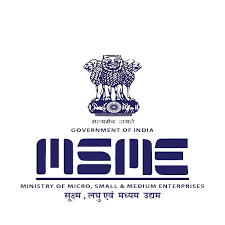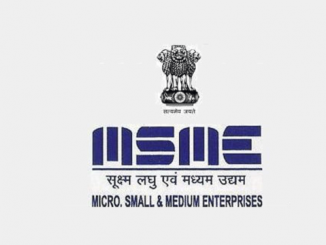
Jan 31: Once the global shocks of the pandemic and the russia-ukraine conflict resulting in a spike in commodity crises fade away, the Indian economy is poised to grow faster in the coming decade.
With improved balance sheets of the banking, non-banking and corporate sectors, a fresh credit cycle have begun as is evident from double-digit growth in bank credit over the past months, the economy has started benefiting from the efficiency gains resulting from greater formalisation, higher financial inclusion and economic opportunities created by digital technology-based economic reforms. India’s growth outlook seems better than in the pre-pandemic years and it is prepared to grow at its potential in the medium term, strong medium-term growth magnets to aid India’s economic growth, various reforms undertaken between 2014-2022 strengthened the Indian economy, The emphasis of reforms on enhancing the ease of living and doing business
During the period of 2014-2022, the Indian Economy underwent a gamut of wide-ranging structural and governance reforms that strengthened the economy’s fundamentals by enhancing its overall efficiency. The Economic Survey 2022-23 was presented in Parliament today by the Union Minister for Finance & Corporate Affairs, Smt. Nirmala Sitharaman stated that with an underlying emphasis on improving the ease of living and doing business, these reforms were based on the broad principles of creating public goods, adopting trust-based governance, co-partnering with the private sector for development, and improving agricultural productivity.
The Economic Survey highlights that the above transformative reforms undertaken by the government had lagged growth returns due to temporary shocks in the economy. However, in the present decade, the presence of strong medium-term growth magnets provides optimism and hope that once these global shocks of the pandemic and the spike in commodity prices in 2022 fade away, the Indian economy is well placed to grow faster in the coming decade.
Reforms for New India – Sabka Saath Sabka Vikaas
According to the Economic Survey, the reforms were undertaken before 2014 primarily catered to product and capital market space. They were necessary and continued post-2014 as well. The government, however, imparted a new dimension to these reforms in the last eight years. With an underlying emphasis on enhancing the ease of living and doing business and improving economic efficiency, the reforms are well placed to lift the economy’s potential growth. The broad principles behind the reforms were creating public goods, adopting trust-based governance, co-partnering with the private sector for development, and improving agricultural productivity. “This approach reflects a paradigm shift in the growth and development strategy of the government, with the emphasis shifted towards building partnerships amongst various stakeholders in the development process, where each contributes to and reaps the development benefits (Sabka Saath, Sabka Vikaas)”, stated the Survey.
Creating public goods to enhance opportunities, efficiencies and ease of living
The Economic Survey notes that a quantum leap in policy commitment and outlay for infrastructure is now visible in the last few years, cushioning economic growth when the non-financial corporate sector was unable to invest due to balance sheet troubles. In doing so, the government has laid a good platform for crowding in private investments and growth in the coming decade. Besides the push to physical infrastructure, the government’s emphasis on developing public digital infrastructure during the last few years has been a game changer in enhancing the economic potential of individuals and businesses. With its strong forward linkages to the non-digital sectors, digitalisation strengthens potential economic growth through various channels. Some of these, such as higher financial inclusion, greater formalisation, increased efficiencies and enhanced opportunities.
Trust-based Governance
According to the Economic Survey, building trust between the government and the citizens/businesses unleashes efficiency gains through improved investor sentiment, better ease of doing business, and more effective governance. Consistent reforms have been made in this direction during the last eight years. Simplification of regulatory frameworks through reforms such as the Insolvency and Bankruptcy Code (IBC) and the Real Estate (Regulation and Development) Act (RERA) has enhanced the ease of doing business. Decriminalisation of minor economic offences under the Companies Act of 2013, simplifying processes by doing away with 25000 unnecessary compliances, repealing more than 1400 archaic laws, abolishing the Angel tax and removing retrospective taxation on offshore indirect transfer of assets located in India, signalling the government’s resolve to ensure a non-adversarial policy environment. In particular, the taxation ecosystem in the country has undergone substantial reforms in the post-2014 period. Tax policy reforms such as adopting a unified GST, reducing corporate tax rates, exemption of sovereign wealth funds and pension funds from taxes, and removing the Dividend Distribution tax have reduced the tax burden on individuals and businesses; and removed the distortionary incentives from the economy.
Promoting the private sector as a co-partner in the development
The Survey notes that a fundamental principle behind the government’s policy in the post- 2014 period has been the engagement with the private sector as a partner in the development process. The New Public Sector Enterprise Policy for Aatmanirbhar Bharat has thus been introduced to realise higher efficiency gains by minimising the presence of the government in the PSEs to only a few strategic sectors. Significant initiatives have been introduced under Aatmanirbhar Bharat and Make in India programmes to enhance India’s manufacturing capabilities and exports across the industries. The National Logistics Policy (2022) has been launched to create an overarching logistics ecosystem for lowering the cost of logistics and bringing it to par with other developed countries. Liberalisation of FDI policy has resulted in a visible structural shift in the gross FDI flows to India during the last decade. Opening the strategic sectors, such as defence, mining and space, for the private sector has enhanced the business opportunities in the economy. Reforms to address the structural challenges faced by MSMEs have also been a vital part of industrial policy in recent years.
Enhancing productivity in agriculture
The agriculture sector in India has grown at an average annual growth rate of 4.6 per cent during the last six years, as observed by the Economic Survey. This growth is partly attributable to good monsoon years and partly to the various reforms undertaken by the government to enhance agricultural productivity. Policies such as Soil Health Cards, the Micro Irrigation Fund, and organic and natural farming have helped the farmers optimise resource use and reduce the cultivation cost. The promotion of Farmer Producer Organisations (FPOs) and the National Agriculture Market (e-NAM) extension Platform have empowered farmers, enhanced their resources, and enabled them to get good returns. Agri Infrastructure Fund (AIF) has supported the creation of various agriculture infrastructures. Kisan Rail exclusively caters to the movement of perishable Agri Horti commodities. According to the survey, all these measures are directed towards supporting the growth in agricultural productivity and sustaining its contribution to overall economic growth in the medium term.
Growth Magnets in this Decade (2023-2030)
The Economic Survey states that the health and economic shocks of the pandemic and the spike in commodity prices in 2022 wear off, the Indian economy is thus well placed to grow at its potential in the coming decade, similar to the growth experience of the economy after 2003. The Economic Survey observes that with improved and healthier balance sheets of the banking, non-banking and corporate sectors, a fresh credit cycle has already begun, evident from the double-digit growth in bank credit over the past months. This is the primary reason for expecting India’s growth outlook to be better than it was in the pre-pandemic years.
The Survey further states that the digitalisation reforms and the resulting efficiency gains in terms of greater formalisation, higher financial inclusion, and more economic opportunities will be the second most important driver of India’s economic growth in the medium term. These productivity-enhancing reforms along with the Government’s Skilling initiatives will also help unleash the benefits of the demographic dividend in the coming years.
Considering the evolving geo-political situation, the Survey notes that India has an opportunity to benefit from the diversification of global supply chains. The last few years have exposed multinational firms to unprecedented risks due to global trade tensions, pandemic-induced supply chain disruptions, and the conflict in Europe. With enabling policy frameworks, India presents itself as a credible destination for capital diversifying out of other countries.
Thus, India’s growth outlook seems better than in the pre-pandemic years, and the Indian economy is prepared to grow at its potential in the medium term.
Disclaimer: We donot claim that the images used as part of the news published are always owned by us. From time to time, we use images sourced as part of news or any related images or representations. Kindly take a look at our image usage policy on how we select the image that are used as part of the news.


